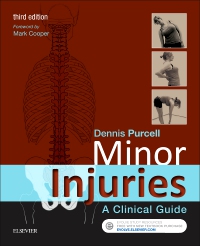
Minor Injuries - Elsevier eBook on VitalSource, 3rd Edition
Elsevier eBook on VitalSource

Now $35.09
A highly successful volume which explores the nurse-led management of minor injuries complete with online training videos. The latest edition reflects the difference in approach between midline injuries and limb injuries, explores the differences between the management of children and adults, and presents key information on X-ray interpretation.
Newer Edition Available
-
- Describes working methods which are robust, flexible and swift
- Explains the classification of musculoskeletal injuries and use of current investigative techniques
- Explains normal limb movement to contextualize abnormal presentation
- More than 150 illustrations help clarify sometimes complex anatomical and clinical information
- Explains the importance of accurate record keeping, including reference to current law
- Discusses the management of trauma in children and adolescents with special reference to consent and confidentiality, non-accidental injury, communication, analgesia, and sports injuries
- Chapter on wound care, including burns, describes wound assessment, exploration, infection, treatment and complications
- Explains the management of minor head injuries, including clinical examination, the use of imaging techniques, cranial nerve assessment, and discharge advice
- Chapter on facial trauma includes damage to the eye, ENT problems such as foreign bodies, and tooth avulsion
- Accompanying website contains 77 videos showing the techniques described in the book and a fully downloadable image bank to aid personal study
-
Part 1 General issues
1. Minor injuries: an overview
2. Clinical examination and the written record
3. X-rays and the non-medical referrer
Part 2 Limb injuries
4. Basics of musculoskeletal injury
5. Basics of musculoskeletal examination
6. The shoulder
7. The elbow
8. The forearm, wrist and hand
9. The pelvis and hip
10. The knee
11. The lower leg
Part 3 Midline injuries
12. Minor head injuries
13. The face, the eye and ENT
14. The spine
15. The chest
Part 4 Wounds and burns
16. Wounds and burns


 as described in our
as described in our 